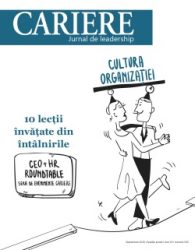Neuromarketing is Opening Up the Customers’ Black Box

“The Black Box” is the official terminology used in marketing books to portray the blunt acceptance that when it comes to customer behavior we do not know what is driving it. In other words, the epicenter of customer decision making is a Black Box that we cannot decipher, we cannot uncover. We can try to influence it and we can observe its outcome, but what happens in there is a big mystery.
But the human brain is not made to accept easily such defeats in understanding. We cannot accept we do not know! So marketers behaved for decades with the illusion that we actually understood customers and could influence effectively their behavior. Pretending that customers knew what they want, that they were able to calculate their actions and take rational decisions, made marketers confident that they themselves knew what they were doing. This attitude gave rise to focus groups and other research tools that asked people how they perceived advertisements, packaging, prices and new products and services. Customers’ conscious replies became the guiding light for taking marketing decisions and for spending serious amounts of money in marketing. More often than not, results were disappointing. But no more…
Neuromarketing comes to open the black box and break the illusion that customers know what they want and why they behave in a certain way. With neuromarketing comes new knowledge and the re-evaluation, if not deletion, of the old one. We can finally take a look into the Black Box!
Let’s take for example the brain’s pleasure and reward systems. Through the long process of human evolution our brain has developed mechanisms that motivate and encourage specific behaviors that have proven beneficial to our survival. These motivating mechanisms are based on chemicals that are released in our brain and make us feel good. So, in order to re-live this feeling, we consciously or mostly unconsciously, repeat the action that produces reward chemicals.
This is extremely important for marketing. Through stimulating pleasure and rewards in their customers’ brain, marketers can ensure desired behavior and induce loyalty. But what gives pleasure to the brain? Many things that we expected, like sex (what a surprise!) but also many unexpected things. Did you know that instantly understanding a message rewards the brain? That there is a happy feeling for quick learning, and on the other hand, an internal brain pain when we struggle to figure out what a company is telling us? This happens because our brains are efficiency-maximizing systems organs. They like taking shortcuts whenever possible. Although the brain represents 2% of the body weight, it consumes 20% of its energy. So, the brain tries to save energy as much as possible! Difficult and complicated messages give it trouble in doing so. The outcome? Ignored messages and stressed customers that will not buy the product. Do you make it easy for the brain of your customers to understand almost instantly what your message, product, action is about? Then, you are helping your customers’ brain to work with maximum efficiency and reward chemicals are released.
I wonder if creative teams in advertising agencies are ready to accept a simple scientific insight like this. Creative people like complicated symbolisms, hidden messages and elaborate executions. They like advertising awards. But in order to make the customers’ brain happy and thus motivate the desired behavior they have to change their attitudes. Apply a simple rule: if your customers do not understand fast what you want from them, what this is all about, then forget it. Their brains have forgotten it already. This does not mean that you need to be simplistic. Or that you don’t need creativity. Actually it means the opposite: creating marketing messages that are simple, memorable, desirable and differentiate you from competition is a very difficult task. This is why most marketers get it wrong. Otherwise every message would work. It is hard to be simple.
Another great pleasure moment for the brain is when the chemical oxytocin is released. This so called “moral” or “happiness” chemical makes us feel great, fair and connected. It is released when mothers give birth, when we hug each other and when we trust. Long-term relations, and especially loyalty, would be almost impossible without this chemical. What does this teaches marketers? Simply, build trust with your customers. The more trust your build the more oxytocin is produced, the more people feel connected with your brand and more rewarded they are when they choose you over competition. They will buy more from you. But how do you induce oxytocin? Make them feel you are trustworthy. This is not an easy or fast fix so you need to be consistent, transparent, reliable and truthful. In an era of social media where every mistake and lie of yours can be easily circulated this is very difficult. But what is good for your customers’ brain it’s good for you!
Neuromarketing is itself a new science. The 90% of knowledge we have for the brain is 10 years old. We are experiencing a marketing revolution. Join and prosper or ignore it at your own risk. Because the black box has opened and it will never close up again.

